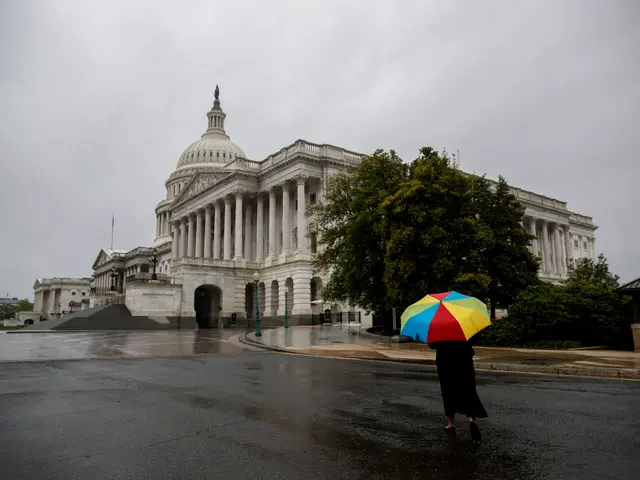More than 30 million Americans have applied for jobless claims during the six-week period since mid-March, indicating the ballooning economic cost of COVID-19 shutdowns and pointing to a deepening recession.
In the week ending April 25, the number of Americans filing for unemployment benefits decreased by 603,000 from the previous week to 3,839,000, the U.S. Bureau of Labor Statistics reported on Thursday.
"New jobless claims continue to trend lower but remain extremely high," Mark Vitner, senior economist of Wells Fargo Securities, wrote in an analysis.
"This equates to nearly one out of every five workers losing their job in a little more than a month, and suggests the unemployment rate will at least briefly approach 20 percent over the next few months," Vitner said.
Michael Hicks, director of the Center for Business and Economic Research at Ball State University in Indiana, however, noted that the newly released jobless claims data points to "a deceleration of the huge losses from early April."
"This is still one of the top five weeks on record, but the slowing losses indicate the bulk of job losses may be behind us," Hicks told Xinhua via email. "As the economy begins to re-open, these losses will continue to slow."
As COVID-19 shutdowns rippled through the workforce, initial jobless claims spiked by 3 million to reach a record 3.3 million in the week ending March 21, surged by 3.34 million to reach 6.87 million in the week ending March 28, totaled 6.62 million in the week ending April 4, fell to 5.2 million in the week ending April 11, and then dropped to 4.4 million in the week ending April 18.
The new data from Bureau of Labor Statistics also showed that the four-week moving average, a method to iron out data volatility, decreased by 757,000 to reach 5 million.
Hicks noted that the data doesn't capture how many of these workers might have already been recalled or found new jobs.
The report also showed the advance seasonally adjusted insured unemployment rate was 12.4 percent for the week ending April 18, an increase of 1.5 percentage points from the previous week's unrevised rate.
Hicks, however, said the current U.S. jobless rate is likely over 20 percent already, considering a lag in data.
Economists at the McKinsey Global Institute argued that the COVID-19 pandemic could hurt as many as 57 million U.S. workers, if furloughs and reduced hours and pay are included, according to a report from Bloomberg.
The jobless claims data came one day after the Commerce Department reported that U.S. real gross domestic product (GDP) in the first quarter contracted at an annual rate of 4.8 percent amid the COVID-19 impact, the biggest quarterly decline since the 2008 financial crisis.
"The weekly initial unemployment claims data are one of the best examples of just how quickly the economy went from firing on all cylinders to being parked on the side of the road," Vitner said.
"While industry detail is not available, we suspect the trend in layoffs has shifted," Vitner noted. "The first wave was dominated by displaced leisure hospitality workers, workers at doctor dentist offices and administrative positions in general."
"A larger portion of more recent job losses have likely been in manufacturing, logistics and professional services," he continued. "The criteria for receiving benefits have also widened to include many contract workers, which may be one reason claims fell less than expected this past week."
Many states are seeing a re-opening of their economies, as the coronavirus has killed over 61,000 people nationwide and infected more than 1 million as of Thursday afternoon, according to a data-tracking tool developed by the Center for Systems Science and Engineering at Johns Hopkins University.
"I think the evidence strongly backs the aggressive initial shelter-in-place orders," Hicks told Xinhua. "However, as we learn more about the disease, easing some of those restrictions seems wise."
Diane Swonk, chief economist at Grant Thornton, a major accounting firm, wrote in a blog Wednesday that "other countries have stepped up much more than the U.S. to test, track and blunt losses associated with the virus."
"Wait-and-see is not an option for an economy hit by such an extraordinary external shock," she said.
 简体中文
简体中文

